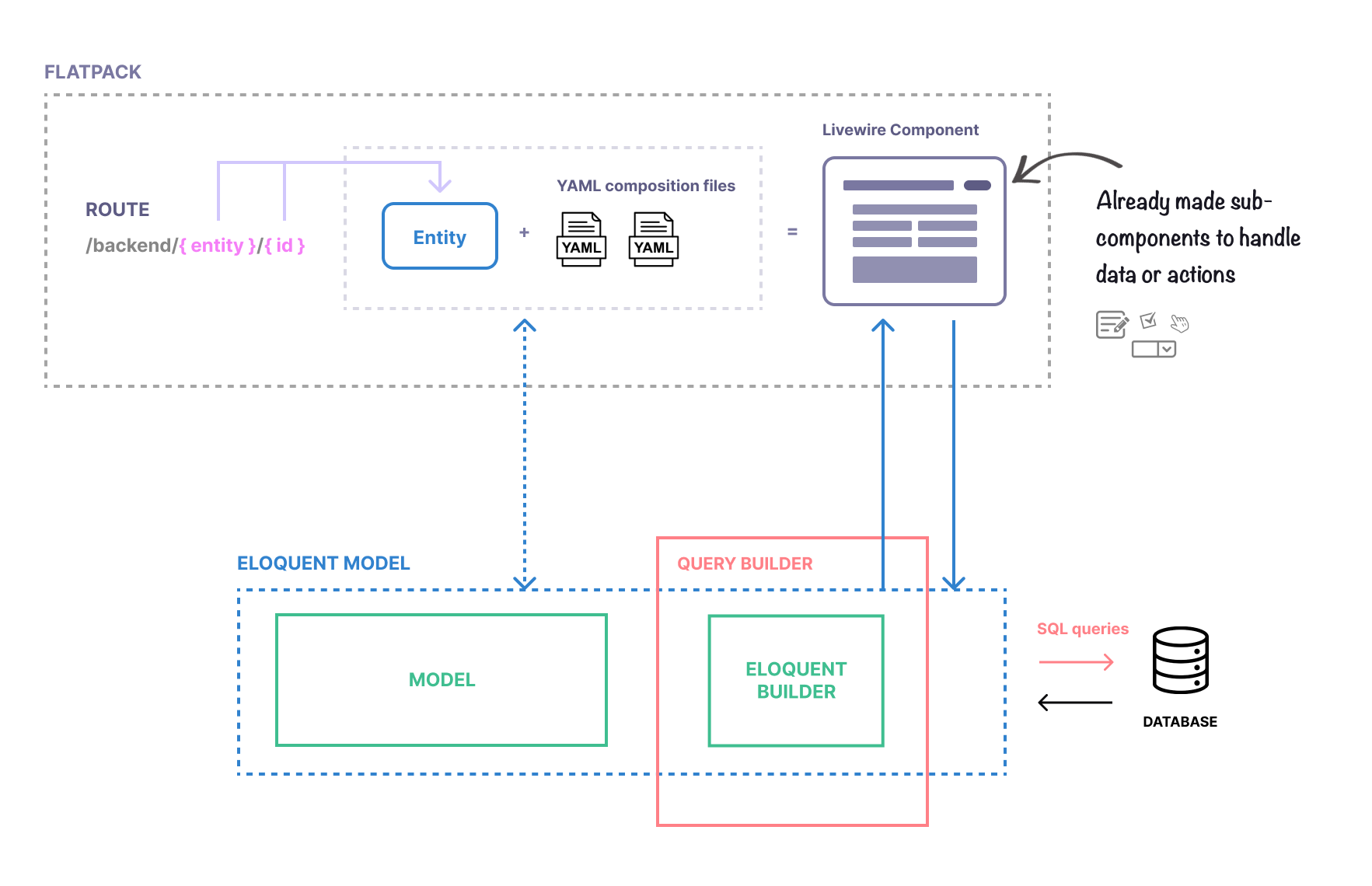How it works
Flatpack helps you to quickly create Forms and Table (Lists) components that are mapped to an Eloquent model instance. It identifies the current model based on the {entity} route parameter.

Example
The route /backend/posts/ (parametrized as /backend/{entity}/) will show a Table component that automatically generates queries using the App\Models\Post model query builder (using rappasoft's Livewire Tables under the hood).
The route /backend/posts/42 (parametrized as /backend/{entity}/{id}) will automatically map the current entity to an instance of App\Models\Post with the id 42.
YAML files define how a Form (or Table) component should look like, by mapping each form field (or table column) to a model's attribute.
# /flatpack/posts/form.yaml
fields:
title:
type: text
label: Title
placeholder: Enter a title
The field title above is rendered as a text input, which is binded to the title attribute of the current instance of Post (e.g. $post->title).